To develop and maintain a high-productivity work environment, you must demonstrate adaptability and a willingness to make required adjustments.
Nothing decreases productivity more rapidly than a stagnant workplace that is strict in its methods of operation and makes no attempt to accommodate its personnel.
If you want to stay at the top of your game and guarantee that your staff does the same, you need regularly evaluate your working methods to determine if there is room for improvement. This includes the ability to successfully track employee performance and control drops in productivity with proactive adjustment.
We will discuss four of the most effective methods for maximizing team performance and fostering a productive work atmosphere.
Permit Your Team to Work During Productive Hours
When many people were forced to work remotely during the COVID-19 pandemic, they discovered that there are numerous alternative methods to work. Those who had greater flexibility and independence were able to make their own timetables and march to their own beat.
Engagement is a fundamental advantage of empowering employees in this manner and granting them complete control over how they approach their work. When you give an employee more autonomy over their decisions, they are able to capitalize on their own talents and work when they are at their most productive.
Here’s what you may discover when you give staff more freedom:
- Persons who are “morning people” are able to attack their workload head-on first thing in the morning.
- Employees who are normally slow-starters can get a good night’s rest and do their best work after lunch on a full stomach.
- Some team members may take regular breaks to maintain their attention levels and avoid the risk of employee burnout.
Even though this method may appear hazardous because you are ceding control and investing a great deal of faith in your team, determining its effectiveness is straightforward. The top employee monitoring software solutions allow you to evaluate whether your team members’ claims of success are accurate.
Permit Cross-Functional Collaboration That Is Effective
Effective collaboration with diverse teams and departments is a crucial ability in the contemporary workplace. As a result, if you can enable successful methods of working in small and big cross-functional teams, you will be able to simplify operations and reduce friction throughout the workday.
The apps utilized by team members are one of the most crucial aspects of cross-functional collaboration. Some may find it simplest to interact and provide status updates using a channel-based chat platform such as Slack, while others may prefer a project management tool that allows them to leave comments and labels for their coworkers.
To ensure that you’re using the appropriate collaboration tools, you must know how much time your employees spend on each app. A widespread fallacy regarding productivity is that it must be proportional to the number of finished activities or projects.
However, what if your staff spends an excessive amount of time or hardly any time utilizing specific applications?
Time data is an excellent productivity metric, and the answer to the question “does staff monitoring boost productivity?” is an emphatic yes.
For example, you may track the time users spend on specific applications. With this vital information, you can spot lost productivity or determine if you’re utilizing improper collaboration tools, which can become unneeded time wasters.
Encourage a Healthy work-life
As employees get unsatisfied with their workloads or management practices and depart abruptly, the recent development of “silent leaving” poses a threat to many businesses.
What is the solution?
Promote a healthy work-life balance and be proactive to guarantee that your staff is engaged in their work and that burnout is unlikely. Employee burnout is, after all, one of the hidden causes of quiet resignation.
Employees are not departing out of animosity for their employers; rather, they have become less involved with their employment over time due to a variety of circumstances. To monitor the danger of employee burnout, you can monitor employee internet usage to uncover troubling tendencies.
Unsure of how to track computer usage?
With a tool, you won’t have to worry about how to track employees who work from home because a system will be in place to do so automatically. The software enables you to identify trends with the employee timeline, providing the most and least active times of the day as well as vital information regarding declining employee engagement.
Here are some frequent causes of disengagement:
- Too much work, which eventually leads to burnout;
- A lack of communication, which breeds resentment and makes employees feel unappreciated;
- Unrealistic, unrealistic expectations lead employees to believe they are not qualified for the role.
To address poor levels of employee engagement, create a healthy work-life balance for your employees by establishing clear limits and providing individualized support.
Demonstrate empathy by listening to your team members and discussing any difficulties they may have, and use regular check-ins to gauge their mental health and state of mind.
Foster Prioritization
Numerous workers struggle with prioritizing their tasks and keeping up with their commitments. When you help your team recognize the benefits of proper prioritization, you can develop a well-oiled machine that is continually making progress.
Utilizing the Eisenhower Matrix is one method for focusing your team on prioritizing. The Eisenhower Matrix is a strategy for time management that organizes work into four categories in a grid:
- Urgent
- Important
- Not Urgent
- Not Important
The objective is to assign each work to the appropriate category. For instance, an email to the sales team may be an important but non-urgent activity. Therefore, it would go here. Alternatively, if the deadline for a customer project is nearing, it may be judged both urgent and significant.
When your team begins to view activities in terms of urgency and significance, they are able to determine the ideal next step for maximum production.
This can be supported by employee monitoring system software that allows you to schedule screenshots at regular intervals that provide a view of what your team is working on. Thus, you can determine whether they are efficiently prioritizing or wasting time on less critical things.







